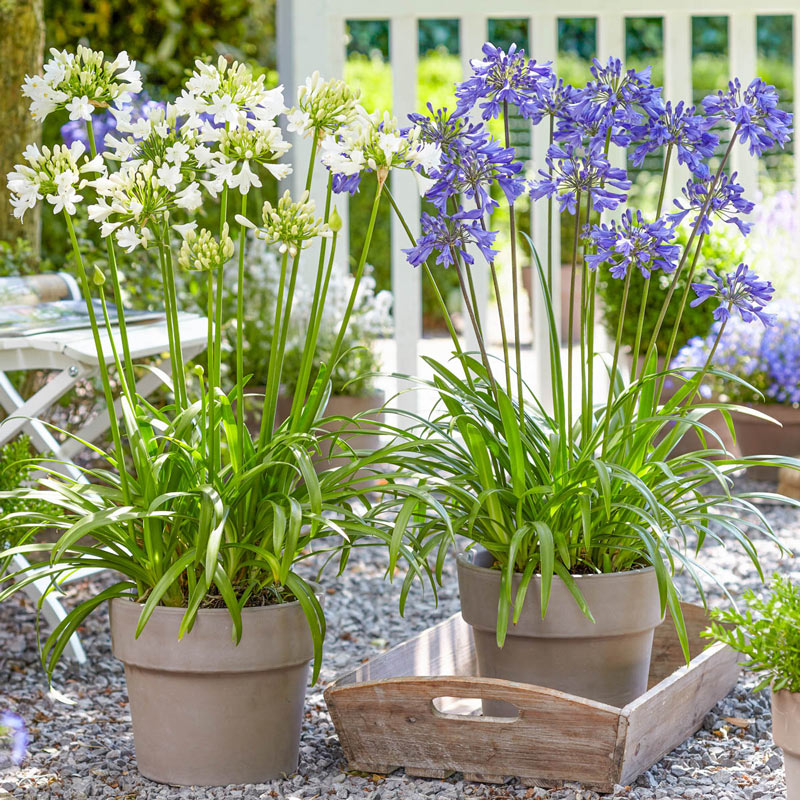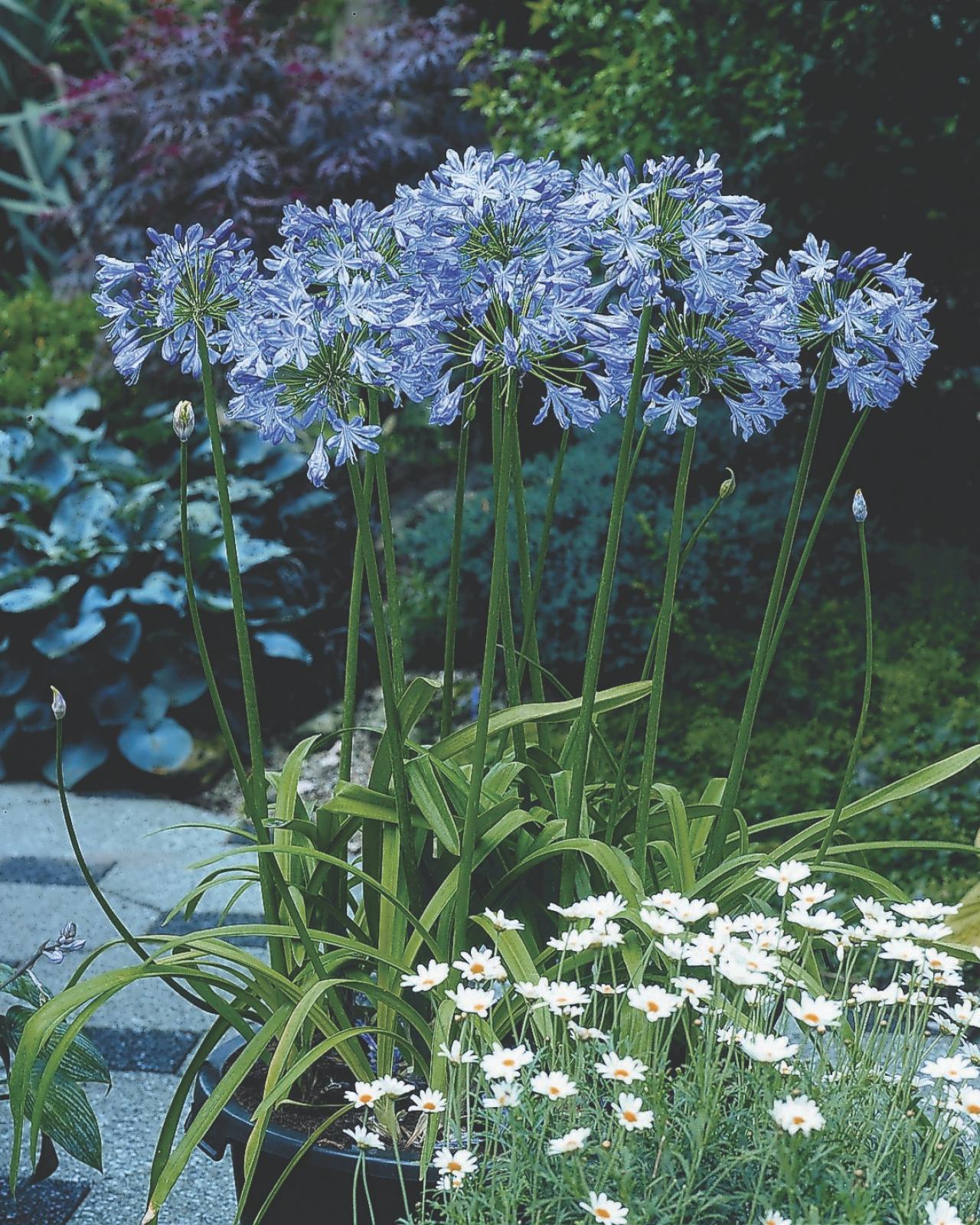Agapanthus Care Tips for Lush and Vibrant Flowers
Letting Loose the Secret to Effective Agapanthus Farming: Advice for a Flourishing Yard
In the world of horticulture, growing agapanthus efficiently requires a calculated method that includes numerous aspects of plant treatment. By understanding the subtleties of agapanthus farming, one can develop an environment where these plants flourish and flower perfectly.
Growing Agapanthus: Finest Practices
When planting Agapanthus, appropriate soil prep work is important for making certain successful development and development of these beautiful flowers. Agapanthus, frequently referred to as Lily of the Nile or African lily, flourishes in well-draining soil with a slightly acidic to neutral pH degree - Agapanthus. Before growing, it is important to modify heavy clay dirts with raw material such as compost or peat moss to boost drainage and give essential nutrients for the plants
To grow Agapanthus, select an area that receives full sunlight to partial shade, as this will advertise healthy and balanced development and plentiful blooming. Dig an opening twice the diameter of the plant's origin sphere and put the Agapanthus at the same deepness it was formerly expanding. Carefully backfill the hole with dirt, pushing down securely to eliminate any air pockets around the origins.
Water the newly planted Agapanthus extensively and remain to keep the soil evenly wet, especially during the plant's energetic expanding period. Agapanthus. Using a well balanced plant food once a month can even more sustain the plant's growth and flowering. By adhering to these ideal practices for growing Agapanthus, you can develop a sensational display screen of these exciting blossoms in your garden
Perfect Dirt Issues for Agapanthus
For optimum development and flowering success of Agapanthus plants, guaranteeing the soil problems are perfect is crucial. Agapanthus chooses dirt that is abundant in nutrients, so including a balanced plant food throughout the growing period can advertise healthy development and dynamic blooms.

Watering and Fertilizing Tips
To make sure healthy growth and lively flowers, correct watering and fertilizing techniques are vital for effective Agapanthus farming. Agapanthus plants benefit from regular watering, especially throughout the expanding season.
When it comes to feeding Agapanthus, a well balanced plant food with equivalent parts nitrogen, phosphorus, and potassium can be used in the springtime to promote healthy and balanced development and blooming. Slow-release fertilizers are suitable for giving nutrients gradually over an extensive duration. Prevent over-fertilizing, as this can bring about extreme vegetation development at the expense of blossoms.
Furthermore, including natural issue like compost into the dirt can boost nutrient degrees and boost soil structure, aiding in the general health of the Agapanthus plants. By adhering to these watering and fertilizing suggestions, garden enthusiasts can guarantee their Agapanthus plants prosper and produce his comment is here sensational display screens of flowers.
Trimming and Deadheading Methods
Appropriate pruning and deadheading techniques play a vital role in keeping the health and looks of Agapanthus plants, matching the essential practices of watering and feeding for effective cultivation. Trimming Agapanthus involves removing invested flower heads, dead or yellowing leaves, and total shaping of the plant to advertise better growth. Deadheading, the process of removing discolored blossoms, not only improves the plant's look but likewise urges further blooming.
When deadheading Agapanthus, it is advisable to snip off the flower stem at the base using sharp, tidy shears. This procedure redirects the plant's power from seed production back into origin and vegetation growth, advertising a healthier and extra durable plant. Normal deadheading can extend the flowering period of Agapanthus and protect against self-seeding, which can cause congestion.
In regards to pruning, Agapanthus normally take advantage of a light trim after blooming to clean up the plant and motivate fresh growth. Reducing go right here the spent flower stems and removing any kind of dead or damaged vegetation helps maintain the plant's vitality and general look. Nonetheless, it is vital to avoid cutting right into the crown of the plant, as this can damage its health.

Protecting Agapanthus From Vermins and Diseases
Executing reliable parasite and condition management techniques is crucial to securing the wellness and vigor of Agapanthus plants in growing. Agapanthus are typically hardy plants, but they can still drop victim to various parasites and conditions otherwise appropriately cared for. One usual parasite that influences Agapanthus is the Agapanthus borer, a caterpillar that passages right into the plant, causing damage to the fallen leaves and blossoms. To avoid invasions, routine inspection of the plants is essential. If borers are identified, they can be by hand removed, or insecticidal soap can be utilized as a control step.
Along with parasites, Agapanthus are at risk to conditions such as origin rot and fungal fallen leave places. These concerns can commonly be avoided by guaranteeing appropriate drainage and preventing overwatering. If signs of disease show up, impacted components of the plant should be immediately gotten rid of to avoid further spread. Fungicides might also be used as a therapy measure, following the maker's guidelines carefully. By staying alert and attending to parasite and condition issues promptly, gardeners can help their Agapanthus flourish and thrive.

Final Thought
In conclusion, successful farming of agapanthus needs proper growing strategies, ideal dirt problems, appropriate watering and fertilizing, regular trimming and deadheading, and security from illness and parasites. By adhering to these tricks and ideas, gardeners can make certain a flourishing yard loaded with stunning agapanthus blossoms. Agapanthus. Keep in mind to keep consistent care and interest to detail to promote the health and wellness and durability of these spectacular plants
When growing Agapanthus, appropriate soil prep work is vital for making sure successful development and growth of these lovely blossoms.Water the newly planted Agapanthus extensively and continue to maintain the soil evenly damp, specifically during the plant's discover this active expanding season.For ideal development and blooming success of Agapanthus plants, making certain the dirt conditions are optimal is crucial. When planting or hair transplanting Agapanthus, ensure the soil is well-prepared to offer the necessary foundation for the plants to establish themselves effectively. One usual parasite that influences Agapanthus is the Agapanthus borer, a caterpillar that passages into the plant, causing damage to the leaves and flowers.